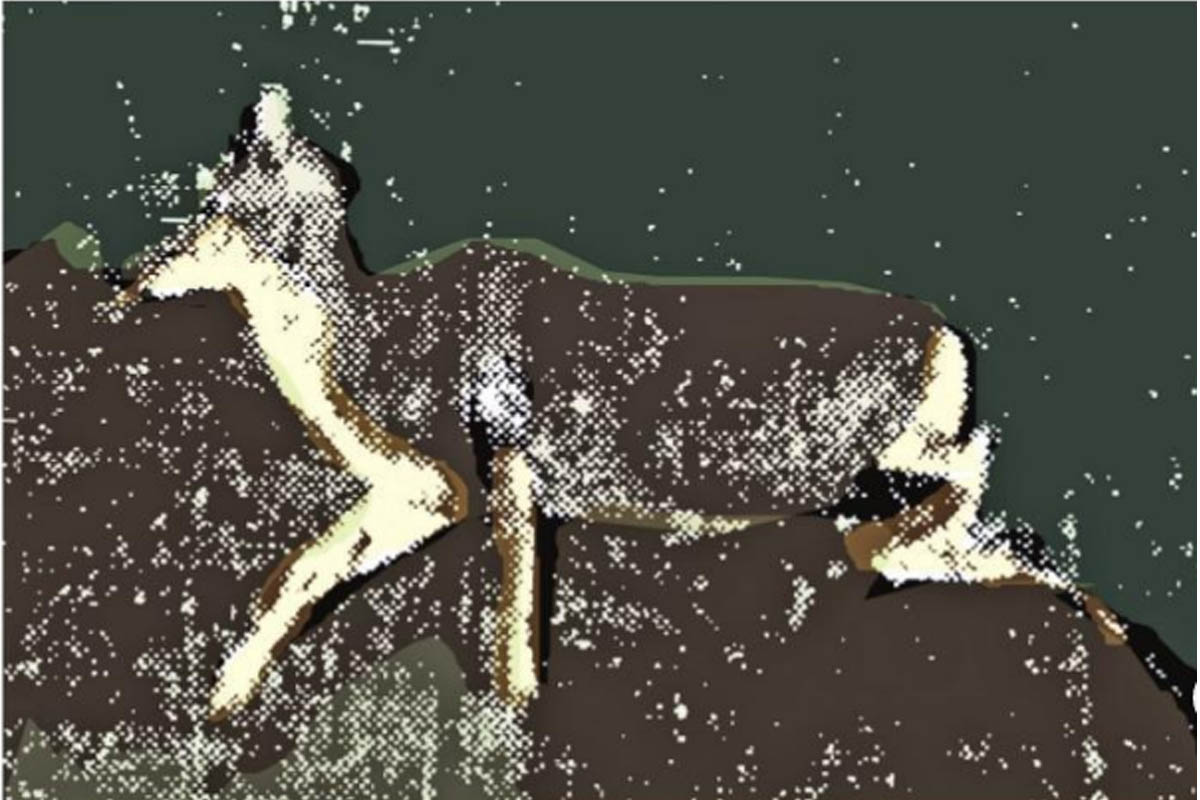Save the Elephant Day: Forest officials keep MCC directives in mind
On Save the Elephant Day, Bankura, Jhargram and West Midnapore, the vulnerable elephant corridors in Bengal reserved any programme today due to the ensuing model code of conduct.
This was published on 11 April 1971.

Photo: SNS
‘When moving about the forest” writes Dunbar Drander of barking deer, “they go at a slow mincing walk, picking their feet up into the air and placing these down again slowly and almost vertically. This action, which they habitually adopt, probably accounts for the abnormal development of the muscles of the forearm. At the gallop they are clumsy and their action gives one the impression that they are going downhill”. He adds that “they have a fair turn of speed for a short distance”.
My picture, showing a female barking deer crossing a forest road at night, depicts this exaggerated lift of the feet when walking, with the legs raised high and set down vertically and delicately as if stepping on eggs. It is quite true that these most interesting and peculiar deer do walk at times in this manner, but Dunbar Brander is incorrect in saying that this is their habitual gait in moving about the forest. I believe it is when they are somewhat apprehensive and not acutely alarmed, as when they are aware that they have been seen and are being watched, that they go prancing in slow motion like this ~ when panicking, of course, they bolt headlong.
Since most men have watched barking deer on the move only when the deer have been conscious of being watched, it is not surprising that the notion that this is their habitual gait has been developed.
Advertisement
I watched that barking deer crossing the road ahead of our stationary jeep very narrowly, and was impressed not only by its high stilted action but also by the fact that the gait suited an instant, bounding getaway in any direction. If you stay still and inconspicuous and watch barking deer moving about a zoo paddock, you will notice, after some time, that their gait is much less stilted and much more natural, much more the easy walk of most deer.
Twice, while on elephant back, I have had the opportunity to watch wild barking deer from close quarters, walking slowly through the forest, feeding. The first time, I believe the animal was unaware of me though it may have seen the riding elephant standing still by a tree; it moved easily, but somewhat furtively, through the undershrub, halting to feed on some choice leaf bud or cluster of leaves from time to time.
The second time, I followed a barking deer mother and her two tiny young, hardly larger than leverets and probably not yet a fortnight old, for a long time ~ incidentally the young were fully coloured, like miniature replicas of their mother, and showed no vestige of spots or streaks. That barking deer knew of our proximity, but after awhile accepted the riding elephant and the men atop him ~ there was a narrow, deep nullah between us.
When bolting, barking deer go off at great speed, jumping over and diving through bushes it their way, and it is the getaway rather than sustained speed over a distance that has survival value for them, for in the forests they inhabit the tree growth and undershrub are too close for sustained pursuit at high speed have seen heavily gravid barking deer does, which one would think too heavily encumbered to bolt, go bounding away as I the devil was behind them, leaping clean over three feet high bushes in their path.
Advertisement